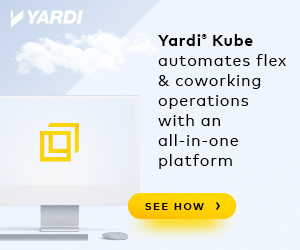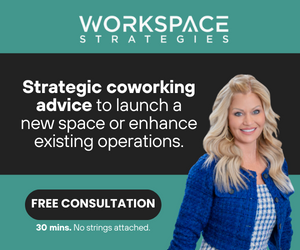- We continue to see organizations take a command and control approach to mandating set office days. Compliance with these blanket policies burns leadership resources, decreases retention, and erodes employee engagement.
- Gallup recently highlighted that 70% of leaders reported they don’t have the formal training to lead a distributed team—whether remote or hybrid.
- Organizations must shift the narrative to empowerment, trust, and human-centricity, focusing on the “me and we.”
As the return-to-office debate continues, it’s becoming more apparent that the decisions are not evidence-based and lack a human-centric focus. We continue to see organizations taking a command and control approach to mandating set days in the office. However, these blanket policies are detrimental to organizational trust, employee engagement, and culture.
Dell’s recent announcement of its controversial return-to-office policy is a perfect example of a strict blanket policy that could backfire.
Dell’s policy, which is truly wild, states that employees working remotely would not be eligible for promotions. It reflects a broader trend in the corporate world, where companies are mandating office returns without fully considering the implications on their workforce.
I recently spoke with Lisa Harvey, VP of Hybrid Experience, and Terry Weiner, a Workplace and Team Effectiveness thought leader, about the broader impact of such mandates on corporate culture and employee well-being. We invite you to listen to the complete interview.
Lisa and Terry, both seasoned professionals who transverse across the trifecta of people, technology, and workplace, argue for a shift in perspective in how organizations approach the return to office. They emphasize the need to move away from top-down, place-based mandates to a more holistic, human-centric approach. The ideal approach recognizes the importance of individual and team attributes and preferences in shaping a supportive and productive work environment that sets the stage for a more dynamic, resilient, adaptable organization in service of performance and sense of belonging.
What’s wrong with office mandates?
Research shows that neither working from home nor in the office significantly boosts productivity. Therefore, it’s imperative to consider human factors and evaluate how our choices in when and where we work impact individuals and the overall people and performance benefits they derive.
You have organizations mandating their people to return to office for a number of days, which is not conducive to the energy state of employees you want showing up each day.
“You have organizations mandating their people to return to office for a number of days, which is not conducive to the energy state of employees you want showing up each day,” Lisa shared, critiquing the badge-and-bolt phenomenon where employees show up, swipe, then return home, just to meet attendance requirements.
Terry highlighted the absurdity of monitoring employees with CCTV to ensure they are at their desks, a practice that undermines trust and hampers productivity.
Lisa added, “By mandating people attend the workplace, you are asking them to exist in it, not experience it. Even worse, the success measure is space well utilized, not time well spent.”
By mandating people attend the workplace, you are asking them to exist in it, not experience it. Even worse, the success measure is space well utilized, not time well spent.
The focus on the when and where of work rather than how is like companies “watering weeds,” especially as companies ask leaders to invest time in enforcing workplace compliance rather than nurturing a thriving work culture.
Is there a better way?
Rigid return-to-office policies ignore the workforce’s diverse needs and fail to leverage the benefits of flexible work arrangements. To get past these pitfalls, organizations must shift the narrative to empowerment, trust, and human-centricity, focusing on the “me and we.” This starts with supporting employees to achieve values-driven flexibility — to choose when and where they work based on their lifestyle needs and desires. Then combined with purpose-driven in-person collaboration, where the team will truly benefit.
Gathering plays a role in our personal and professional well-being, specifically in the form of building social capital, tacit knowledge, and increasing team effectiveness, which are contributors to performance and our sense of belonging. Gathering rituals and practices should be personalized at three levels: the individual, the team, and the organization.
“We want teams to agree on when and why coming together makes sense for them in the context of the nature of the work they need to do, who they need to do it with, and the maturity stage of the team,” Lisa explained, advocating for data-driven strategies that empower teams to make informed decisions about where they work and why they will gather. The idea is to create an environment where employees feel empowered and trusted to work in a way that best suits their personal and professional lives.
Terry explained the importance of understanding the human aspect of workplace dynamics. “It’s critical to focus on the human factor,” Terry explained, underscoring the important shift from viewing employees merely as productivity units to recognizing their holistic needs.
For example, leaders with weak social connections inside their company slow down decision-making and problem-solving, increase risk, and hamper creativity and innovation. Personalized gathering rhythms can strengthen bonds and accelerate productivity.
Likewise, teams need tailored in-person rituals — not organization-wide mandates. Each team’s cross-functional gathering cadence should be contextual and aligned with its work needs and cycles. Teams need to adopt a we mindset and adapt their gathering cadence to their team’s maturity stage to cultivate high performance further. For example, if there are a few new starters in the team, the team should adapt their gathering cadence to build trust and respect quickly to help them assimilate and perform.
On an individual level, people need to understand their own preferences. An extrovert may need a buzzy coffee shop to energize when they feel fatigued, while an introvert may prefer quiet focus at home.
The one-size-fits-all approach disengages employees by refusing to meet diverse needs. Policies like Dell’s recent one restricting remote employee promotions further alienate them. Lisa depicted a lose-lose for Dell whereby they miss reaping the performance benefits of a high-potential employee, and also create a disengaged high-potential employee, who as a role model within the organization will have a ripple effect across their team and beyond. Ultimately, a high-potential employee with no career path to realize their potential will depart.
Instead of creating a losing scenario, we have a chance to create flexible, human-centric cultures that tap into the innovation and growth our capable workforces can unlock. But it starts with listening and understanding at an individual and team level before determining organizational changes. This is followed closely by building the capability to lead and work within a distributed team.
Gallup recently highlighted that 70% of leaders reported they don’t have the formal training to lead a distributed team—whether remote or hybrid.
Gallup recently highlighted that 70% of leaders reported they don’t have the formal training to lead a distributed team—whether remote or hybrid. Leaders should make it an urgent priority to provide managers with an approach and resources that will help them have team level discussions and reach team level agreements. This is key to ensure consistent application across the organization. Equitable practices help avoid the risk of ill-equipped managers making team decisions based on their own personal preferences that become detrimental on both a human and organizational level.
If we don’t get this right, we risk reverting back to pre-pandemic norms that drained employers through real estate costs, and drained employees through lack of work-life alignment. The risk of burnout looms as large as ever.

 Dr. Gleb Tsipursky – The Office Whisperer
Dr. Gleb Tsipursky – The Office Whisperer Cat Johnson – Coworking Marketing Maven
Cat Johnson – Coworking Marketing Maven Angela Howard – Culture Expert
Angela Howard – Culture Expert Drew Jones – Design & Innovation
Drew Jones – Design & Innovation Andrea Pirrotti-Dranchak – Competitive Advantage
Andrea Pirrotti-Dranchak – Competitive Advantage Jonathan Price – CRE & Flex Expert
Jonathan Price – CRE & Flex Expert Jeremy Fennema – Tech Innovation Alchemist
Jeremy Fennema – Tech Innovation Alchemist







